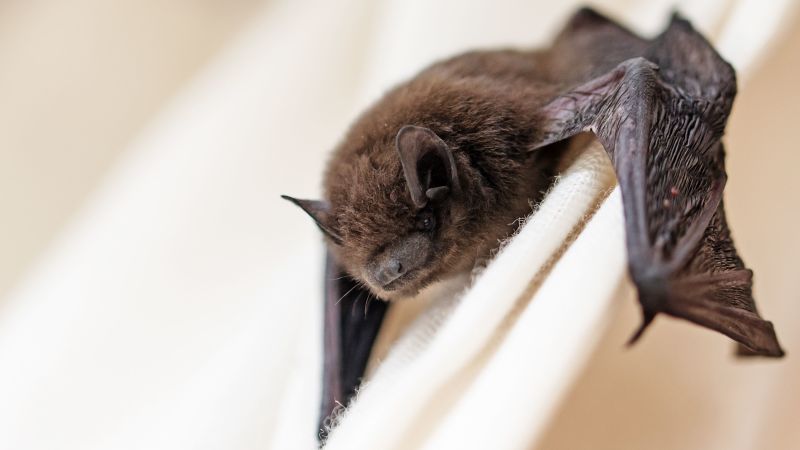
CNN
—
Researchers at China’s Wuhan Institute of Virology have identified a new strain of coronavirus in bats that shares similarities with SARS-CoV-2, the virus responsible for Covid-19. According to a recent study, this virus can infiltrate human cells but as of now, there are no known human infections, and health experts assert that it does not pose a current risk to public health.
Similar to SARS-CoV-2, the newly termed HKU5-CoV-2 accesses cells through the human ACE2 receptor protein found on cell surfaces. This recently discovered coronavirus belongs to the same family as the pathogen that causes Middle East Respiratory Syndrome (MERS), which is known for its severe consequences.
The study, published last week in the journal Cell, indicated that researchers detected the virus in anal swab samples from a bat of the Pipistrellus genus, and laboratory tests confirmed its ability to infect human cells.
The US Centers for Disease Control and Prevention (CDC) has stated, in response to the findings, that there are currently no reported human infections and that they are closely monitoring the situation. The CDC emphasized that the study poses no immediate health concerns.
Scientists note that this newly identified coronavirus is less efficient at infecting cells compared to the virus responsible for Covid-19. However, due to its origin from the Wuhan lab—an institution often scrutinized concerning the origins of Covid-19—this discovery has attracted significant attention.
Despite the alarmist terminology associated with the study, Dr. Amira Roess emphasized that there is no cause for panic.
“The researchers have made it clear that this should not lead to unnecessary concern,” explained Roess, a global health and epidemiology professor at George Mason University’s College of Public Health, who has collaborated internationally to study the MERS coronavirus.
Roess underscored the importance of research such as this.
“Such studies enhance our preparedness for potential risks by providing insight into how viruses might spill over into human populations in the future,” she stated. “The more knowledge we acquire regarding these pathogens, the more equipped we are to handle them.”
In laboratory tests, antiviral treatments effective against SARS-CoV-2 also demonstrated efficacy against this newly identified coronavirus.
Dr. Alex Greninger, a lab medicine and pathology professor at the University of Washington Medical Center and early developer of Covid-19 detection tests, commented on the nature of viruses, referring to it as “the ultimate bioterrorist” but reassured the public that there should be no alarm regarding this recent discovery.
“There are likely numerous coronaviruses circulating among bats capable of entering human cells,” Greninger remarked.
If individuals feel concerned, Greninger suggested focusing on prevalent coronaviruses that are already affecting people, like 229E, NL63, OC43, and HKU1, which are known to cause the common cold. While these generally result in mild respiratory issues, they can escalate to more severe conditions like pneumonia or croup.
“These viruses recur every winter, so we should redirect our discussions toward them rather than emphasizing HKU5,” Greninger advised.
Dr. Phoebe Lostroh, author of “Molecular and Cellular Biology of Viruses,” noted that sensational headlines about this newly identified coronavirus potentially causing the next pandemic are exaggerated and “not constructive,” especially amid existing fears surrounding the reduction of US involvement in global health initiatives.
“We should prioritize our concerns about issues like avian flu and its impact on various mammals over this new coronavirus, which originates from a bat population and bears similarities to SARS-CoV-2 but does not represent a groundbreaking discovery,” said Lostroh, an associate professor of molecular biology at Colorado College.
Roess highlighted that the study underscores the value of international collaboration in monitoring viruses that may pose a threat to human health.
“It is concerning to think about the decreasing global cooperation in public health,” she remarked. With the US’s withdrawal from the World Health Organization under the Trump administration, Roess emphasizes the critical need for sustained global efforts and collaborations in health research.
Furthermore, Roess noted that the study serves as an important reminder to exercise caution around wildlife like bats.
“Bats carry various pathogens that can pose serious health risks to humans,” she cautioned. “Therefore, it’s essential to respect these wild creatures and limit human interaction with them to avoid potential harm.”









